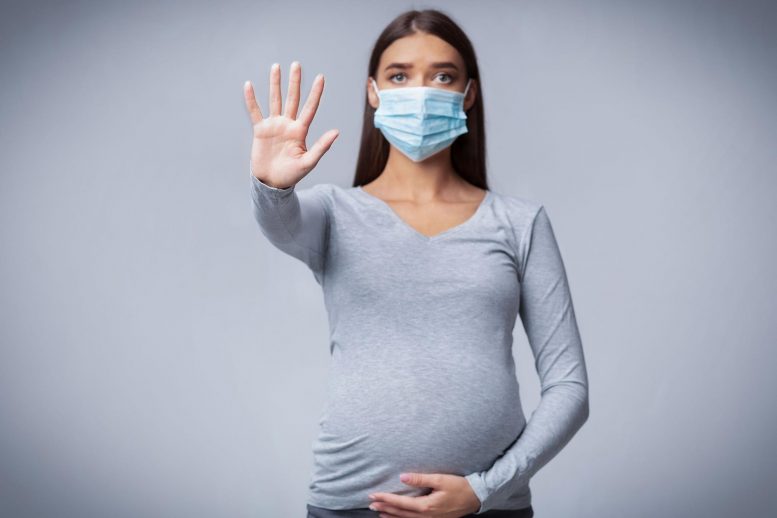
In-utero exposure to the coronavirus pandemic could cause developmental difficulties and accelerated aging in the century ahead, say USC researchers.
Exposure to COVID-19 could pose a risk to the health and aging of individuals who aren’t even born yet, according to a newly published analysis by USC researchers.
In the article, University Professors Eileen Crimmins and Caleb Finch of the USC Leonard Davis School of Gerontology and Keck School of Medicine neonatology fellow Molly Easterlin note that by the end of 2020, approximately 300,000 infants could be born to mothers infected by SARS-CoV-2, the virus that causes COVID-19. Millions more will be born into families who have experienced tremendous stress and upheaval due to the pandemic even if they haven’t been infected themselves, the authors added.
While the longer-term effects of COVID-19 on infants is yet to be seen, researchers can find some insight from the past, including the 1918 flu pandemic and previous coronavirus illnesses such as SARS in 2002 and MERS in 2012, Finch said.
“The 1918 influenza pandemic had long-term impacts on the cohort exposed in utero, which experienced earlier adult mortality and more diabetes, ischemic heart disease and depression after age 50,” he said. “It is possible that the COVID-19 pandemic will also have long-term impacts on the cohort that was in utero during the pandemic, from exposure to maternal infection and/or the stress of the pandemic environment.”
Maternal viral infections can affect fetuses through multiple pathways, from direct transmission through the placenta to inflammatory responses that disturb in-utero metabolism and negatively affect growth. While direct maternal-fetal transmission of the virus and severe birth defects appear to have been rare during previous coronavirus outbreaks, there were increases in preterm delivery and low birth weight during both the 2002 SARS and 2009 H1N1 influenza outbreaks, which are possible consequences of increased inflammation.
While studies on COVID-19 and pregnancy are still in their early stages, there have already been some concerning results that merit a closer look in ongoing studies, the authors wrote. Increased rates of preterm birth may be linked to maternal SARS-CoV-2 infections, and other studies indicate that severe illness is correlated with a higher risk of stillbirth. Other potential dangers, including the increased risk of blood clots presented by both pregnancy and severe COVID-19, also need further study.
“We suggest that to capture the consequences of viral exposure in utero for childhood development and adult health, COVID-19 birth cohort studies consider immediate collection of data from the mother, fetus, neonate, and placenta,” Easterlin said. “These initial data should be followed by analysis of child growth and development and lifelong study of health, behavioral patterns, and cognitive functioning.”
In addition to the direct risks posed by infection, the COVID-19 pandemic has also increased levels of stress, unemployment, food insecurity, and domestic violence, and diminished or disrupted prenatal care. For these reasons, the researchers suggest that cohort studies also include non-infected mothers and children as well as compare the COVID-19 cohort to children born before or after the pandemic and include various socioeconomic measures.
“The inclusion of information on social and economic stresses will allow comparisons between countries taking different measures to reduce spread of the virus,” Crimmins said. “These types of comparisons may give us further insights beyond the effects of COVID, such as socioeconomic and social policies that may decrease risk of preterm birth.”
Reference: “Will prenatal exposure to SARS-CoV-2 define a birth cohort with accelerated aging in the century ahead?” by Molly Crimmins Easterlin, Eileen M. Crimmins and Caleb E. Finch, 10 November 2020, Journal of Developmental Origins of Health and Disease.
DOI: 10.1017/S204017442000104X
The article first appeared online on November 10, 2020 in the Journal of Developmental Origins of Health and Disease. The study was supported by National Institute on Aging grants to Crimmins (P30-AG017265) and Finch (R01-AG051521, P01-AG055367).